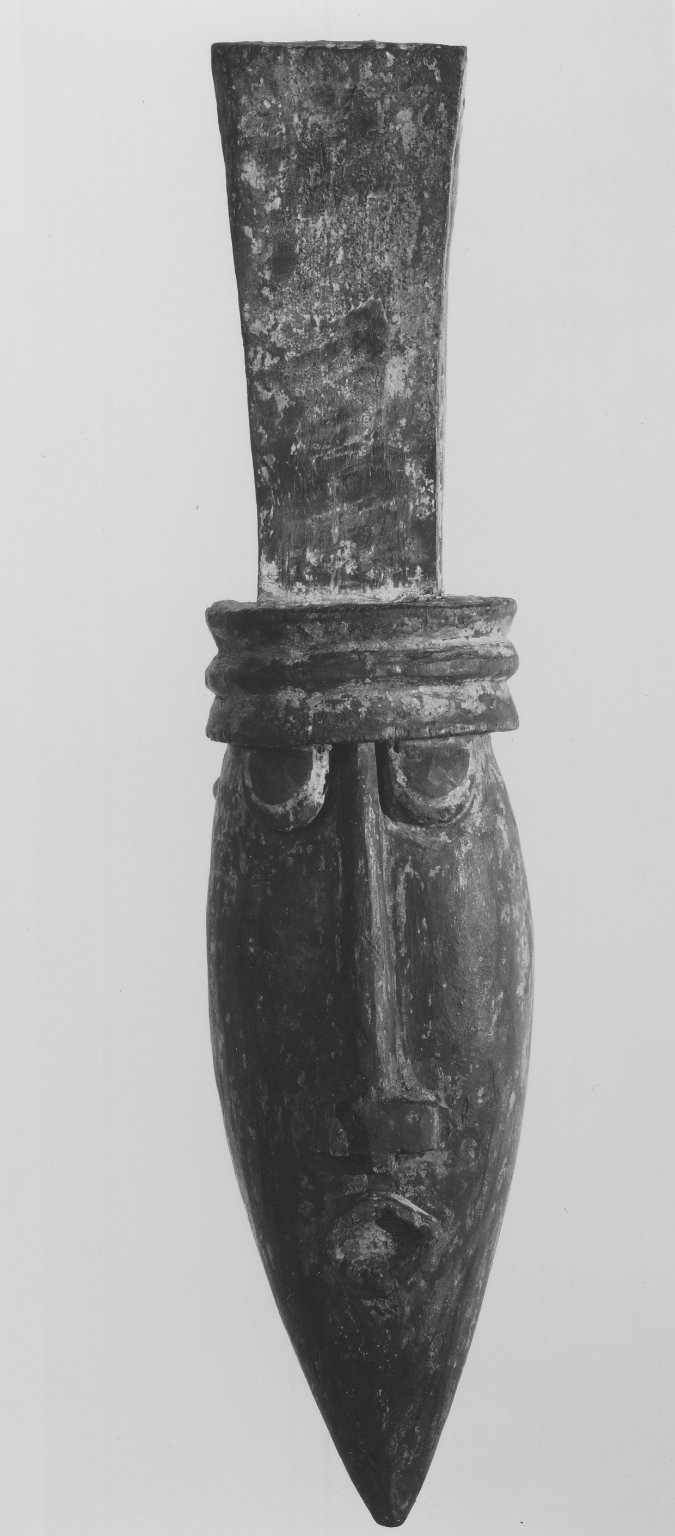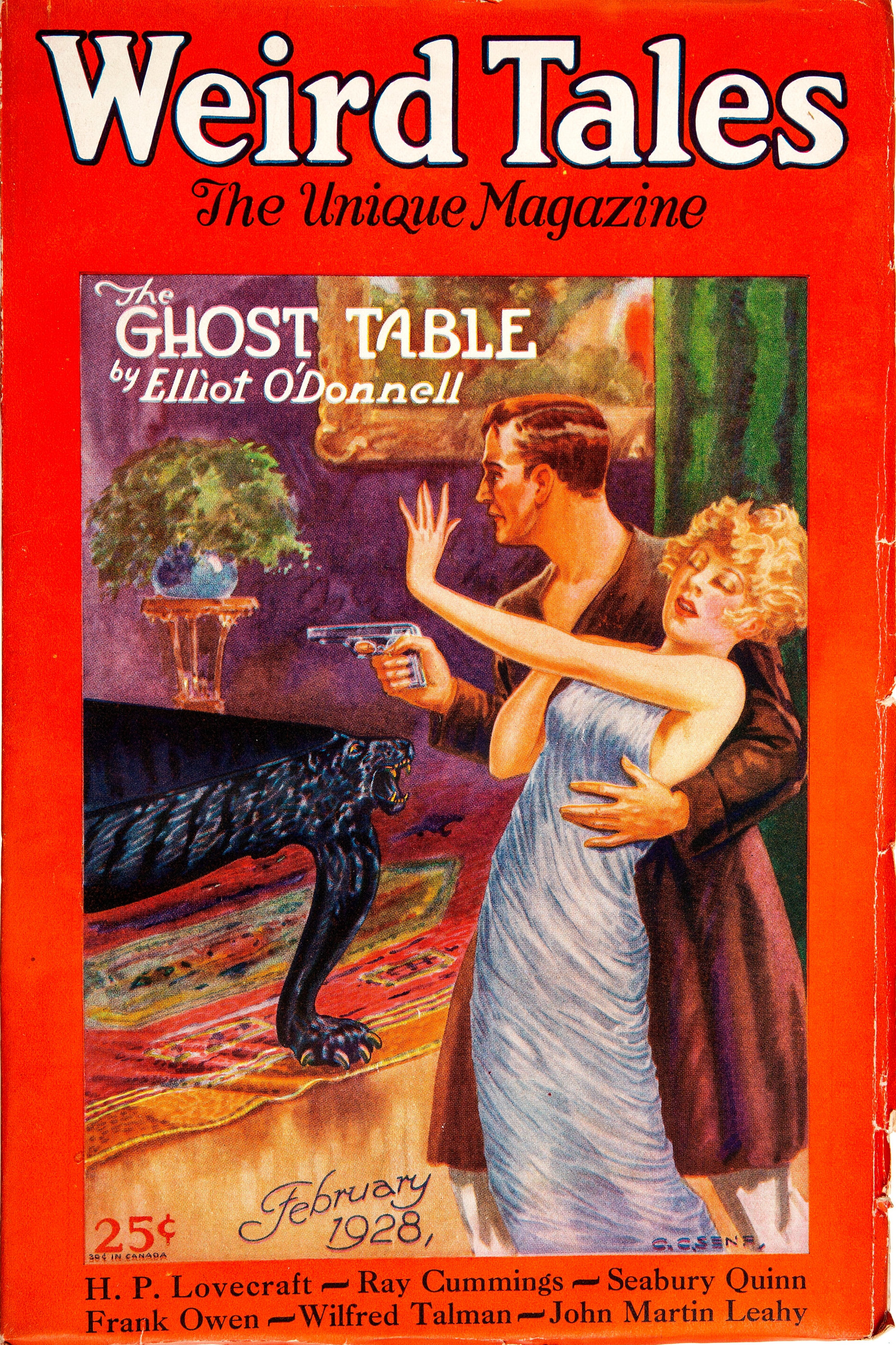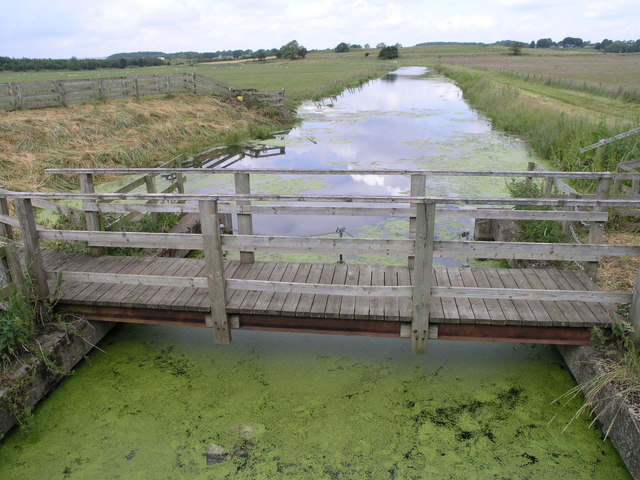|
Peg Powler
Peg Powler is a hag and water spirit in English folklore who inhabits the River Tees. Similar to the Grindylow, Jenny Greenteeth, and Nelly Longarms, she drags children into the water if they get too close to the edge. She is regarded as a bogeyman figure who is invoked by parents to frighten children into proper behavior.Briggs, Katharine (1976). ''An Encyclopedia of Fairies''. Pantheon Books. pp. 323–324. . The 19th century folklorist William Henderson describes Peg Powler as having green hair and "an insatiable desire for human life" and she is said to lure people into the river to drown or be devoured. The foam or froth which is often seen floating on certain parts of the Tees is called "Peg Powler's suds" or "Peg Powler's cream". A similar creature named Nanny Powler is said to haunt the River Skerne, a tributary of the Tees. Michael Denham regards her as either the sister or daughter of Peg Powler. Elliott O'Donnell paints a somewhat different picture of Peg Powler in hi ... [...More Info...] [...Related Items...] OR: [Wikipedia] [Google] [Baidu] |
Water Spirit
A water spirit is a kind of supernatural being found in the folklore of many cultures: African Some water spirits in traditional African religion include: * Mami Wata is a transcultural pantheon of water spirits and deities of the African diaspora. For the many names associated with Mami Wata spirits and goddess, see Names of Mami Wata., p. 1. * Owu Mmiri of some riverine people of Nigeria are often described as mermaid-like spirit of water. * A jengu (plural miengu) is a water spirit in the traditional beliefs of the Sawa ethnic groups of Cameroon, particularly the Duala, Bakweri, and related Sawa peoples. Among the Bakweri, the name is liengu (plural: maengu). * A simbi is a mermaid-like or reptilian spirits from Kongo tribe and related to Vaudou religion. Celtic In Celtic mythology: * An Each uisge is a particularly dangerous "water horse" supposed to be found in Scotland; its Irish counterpart is the Aughisky. * The Gwragedd Annwn are female Welsh lake fairies of gr ... [...More Info...] [...Related Items...] OR: [Wikipedia] [Google] [Baidu] |
Elliott O'Donnell
Elliott O'Donnell (27 February 1872 – 8 May 1965) was an English author known primarily for his books about ghosts. He claimed to have seen a ghost, described as an elemental figure covered with spots, when he was five years old. He also claimed to have been strangled by a mysterious phantom in Dublin (however, no permanent effect would seem to have been suffered). Career He was born in England in Clifton, Bristol, Clifton (near Bristol), the son of Irishman Reverend Henry O'Donnell (1827–1873) and Englishwoman Elizabeth Mousley (née Harrison); he had three older siblings, Henry O'Donnell, Helena O'Donnell and Petronella O'Donnell. [...More Info...] [...Related Items...] OR: [Wikipedia] [Google] [Baidu] |
Water Spirits
Water (chemical formula ) is an inorganic, transparent, tasteless, odorless, and nearly colorless chemical substance, which is the main constituent of Earth's hydrosphere and the fluids of all known living organisms (in which it acts as a solvent). It is vital for all known forms of life, despite not providing food, energy or organic micronutrients. Its chemical formula, H2O, indicates that each of its molecules contains one oxygen and two hydrogen atoms, connected by covalent bonds. The hydrogen atoms are attached to the oxygen atom at an angle of 104.45°. "Water" is also the name of the liquid state of H2O at standard temperature and pressure. A number of natural states of water exist. It forms precipitation in the form of rain and aerosols in the form of fog. Clouds consist of suspended droplets of water and ice, its solid state. When finely divided, crystalline ice may precipitate in the form of snow. The gaseous state of water is steam or water vapor. Water covers ab ... [...More Info...] [...Related Items...] OR: [Wikipedia] [Google] [Baidu] |
Northumbrian Folklore
Northumbrian may refer to: Languages * present-day Northumbrian dialect, a variant of Northern English closely related to Scots * historic Northumbrian Old English, a variety of Old English spoken in the Kingdom of Northumbria People * an inhabitant of the present-day region of Northumbria or North East England * an inhabitant of the historic county of Northumberland specifically * an inhabitant of the historic Kingdom of Northumbria Transport * Northumbrian (locomotive) ''Northumbrian'' was an early steam locomotive built by Robert Stephenson in 1830 and used at the opening of the Liverpool and Manchester Railway (L&M). It was the eighth of Stephenson's nine 0-2-2 locomotives in the style of ''Rocket'', but ..., a locomotive built in 1830 and first to encompass smokebox and firebox within the boiler barrel {{disambiguation Northumbria ... [...More Info...] [...Related Items...] OR: [Wikipedia] [Google] [Baidu] |
Female Legendary Creatures
Female (symbol: ♀) is the sex of an organism that produces the large non-motile ova (egg cells), the type of gamete (sex cell) that fuses with the male gamete during sexual reproduction. A female has larger gametes than a male. Females and males are results of the anisogamous reproduction system, wherein gametes are of different sizes, unlike isogamy where they are the same size. The exact mechanism of female gamete evolution remains unknown. In species that have males and females, sex-determination may be based on either sex chromosomes, or environmental conditions. Most female mammals, including female humans, have two X chromosomes. Female characteristics vary between different species with some species having pronounced secondary female sex characteristics, such as the presence of pronounced mammary glands in mammals. In humans, the word ''female'' can also be used to refer to gender in the social sense of gender role or gender identity. Etymology and usage The ... [...More Info...] [...Related Items...] OR: [Wikipedia] [Google] [Baidu] |
English Legendary Characters
English usually refers to: * English language * English people English may also refer to: Peoples, culture, and language * ''English'', an adjective for something of, from, or related to England ** English national identity, an identity and common culture ** English language in England, a variant of the English language spoken in England * English languages (other) * English studies, the study of English language and literature * ''English'', an Amish term for non-Amish, regardless of ethnicity Individuals * English (surname), a list of notable people with the surname ''English'' * People with the given name ** English McConnell (1882–1928), Irish footballer ** English Fisher (1928–2011), American boxing coach ** English Gardner (b. 1992), American track and field sprinter Places United States * English, Indiana, a town * English, Kentucky, an unincorporated community * English, Brazoria County, Texas, an unincorporated community * En ... [...More Info...] [...Related Items...] OR: [Wikipedia] [Google] [Baidu] |
County Durham Folklore
A county is a geographic region of a country used for administrative or other purposesChambers Dictionary, L. Brookes (ed.), 2005, Chambers Harrap Publishers Ltd, Edinburgh in certain modern nations. The term is derived from the Old French denoting a jurisdiction under the sovereignty of a count (earl) or a viscount.The Oxford Dictionary of English Etymology, C. W. Onions (Ed.), 1966, Oxford University Press Literal equivalents in other languages, derived from the equivalent of "count", are now seldom used officially, including , , , , , , , and ''zhupa'' in Slavic languages; terms equivalent to commune/community are now often instead used. When the Normans conquered England, they brought the term with them. The Saxons had already established the districts that became the historic counties of England, calling them shires;Vision of Britai– Type details for ancient county. Retrieved 31 March 2012 many county names derive from the name of the county town (county seat) with t ... [...More Info...] [...Related Items...] OR: [Wikipedia] [Google] [Baidu] |
Glen James Brown
A glen is a valley, typically one that is long and bounded by gently sloped concave sides, unlike a ravine, which is deep and bounded by steep slopes. Whittow defines it as a "Scottish term for a deep valley in the Highlands" that is "narrower than a strath".. The word is Goidelic languages, Goidelic in origin: ''gleann'' in Irish language, Irish and Scottish Gaelic, ''glion'' in Manx language, Manx. The designation "glen" also occurs often in place names. Etymology The word is Goidelic languages, Goidelic in origin: ''gleann'' in Irish language, Irish and Scottish Gaelic, ''glion'' in Manx language, Manx. In Manx, ''glan'' is also to be found meaning glen. It is cognate with Welsh language, Welsh ''glyn''. Examples in Northern England, such as Glenridding, Westmorland, or Glendue, near Haltwhistle, Northumberland, are thought to derive from the aforementioned Cumbric cognate, or another Brittonic languages, Brythonic equivalent. This likely underlies some examples in Scotti ... [...More Info...] [...Related Items...] OR: [Wikipedia] [Google] [Baidu] |
Ironopolis
Middlesbrough ( ) is a town on the southern bank of the River Tees in North Yorkshire, England. It is near the North York Moors national park. It is the namesake and main town of its local borough council area. Until the early 1800s, the area was rural farming land. By 1830, a new industrial town and port started to be developed, driven by the coal and later ironworks. Steel production and ship building began in the late 1800s, remaining associated with the town until post-industrial decline occurred in the late twentieth century. Trade (notably through ports) and digital enterprise sectors contemporarily contribute to the local economy, Teesside University and Middlesbrough College to local education. In 1853, it became a town. The motto ("We shall be" in Latin) was adopted, it reflects ("We have been") of the Bruce clan which were Cleveland's mediaeval lords. The town's coat of arms is three ships representing shipbuilding and maritime trade and an azure (blue) lion, ... [...More Info...] [...Related Items...] OR: [Wikipedia] [Google] [Baidu] |
Michael Denham
Michael Aislabie Denham (1801''1841 England Census'', ''1851 England Census'' – 10 September 1859) was an English merchant and collector of folklore. Life A native of Gainford, County Durham, Denham was in business at Kingston-upon-Hull in the early part of his life. Ultimately he settled as a general merchant at Piercebridge, near Gainford, where he died on 10 September 1859. Works Denham collected local lore. His works were: * ''A Collection of Proverbs and Popular Sayings relating to the Seasons, the Weather, and Agricultural Pursuits, gathered chiefly from oral tradition'', London, 1846, printed by the Percy Society. * ''The Slogans, and War and Gathering Cries of the North of England'', 1850, and with additions, Newcastle upon Tyne, 1851. * ''A Collection of Bishoprick Rhymes, Proverbs, and Sayings'', to which he afterwards added four tracts of the same kind, completing the last about 1858. * ''Cumberland Rhymes, Proverbs, and Sayings'', in four parts, the last of which ... [...More Info...] [...Related Items...] OR: [Wikipedia] [Google] [Baidu] |
English Folklore
English folklore consists of the myths and legends of England, including the English region's mythical creatures, traditional recipes, urban legends, proverbs, superstitions, and folktales. Its cultural history is rooted in Celtic, Christian, and Germanic folklore. During the Renaissance in the 16th century, England looked to more European texts to develop a national identity. English folklore has continued to differ according to region, although there are shared elements across the country. Its folktales include the traditional Robin Hood tales and the Brythonic-inspired Arthurian legend, and their stories often contained a moral imperative stemming from Christian values. The folktales, characters and creatures are often derived from aspects of English experience, such as topography, architecture, real people, or real events. History Before England was founded in the year 927, Wessex and its surrounding areas' cultures were transformed by the invasion of the Danish Kin ... [...More Info...] [...Related Items...] OR: [Wikipedia] [Google] [Baidu] |
River Skerne
The River Skerne is a tributary of the River Tees. It flows through County Durham in England. Course The Skerne is about long and begins in Magnesian Limestone hills between Trimdon and Trimdon Grange and ends at Hurworth Place where it joins the River Tees. Three miles after the source the Skerne is joined by Hurworth Burn and enters Hurworth Burn Reservoir on the borders of Stockton-on-Tees and County Durham. On leaving the reservoir, the Skerne heads south-west towards Sedgefield. It flows through farmland between Fishburn and Sedgefield and it seems likely that the Skerne is "the fish-stream" that gives Fishburn its name. Three miles west of Fishburn, it is crossed by the A1(M) motorway near Bradbury interchange. At this point the Skerne takes a southerly course and, for about five miles (8 km) as far south as Aycliffe, it runs roughly parallel to the motorway and the East Coast Main Line. A number of smaller tributaries join the Skerne in the area and often form l ... [...More Info...] [...Related Items...] OR: [Wikipedia] [Google] [Baidu] |




